I feel humans have a stewardship to protect this beautiful planet that gives us so very much – physically, emotionally and spiritually.
-Kitty Harvill
I first crossed virtual paths with Kitty Harvill when I discovered a wonderful new book which has been created to help educate children in Brazil about the endangered Brazilian Red-tailed Amazon (Amazona brasiliensis): Vida Livre (Live Free). I am always looking out to see how countries which actually have wild parrots go about trying to end the parrot trade in their own backyard; often, this means teaching their children so they grow up to be conservationally-aware adults.
Kitty is the illustrator behind this beautiful work of art, and I was thrilled to receive a copy of this wonderful book. I discovered she spends her time in both the US and Brazil, and has been granted the prestigious “Artist For Conservation” award. As stated in her official bio, “much of her work is focused on endangered species and the beauty of the Atlantic Forest. Her use of color, both dramatic and delicate, her instinctual response to the play of light on her subject continue to be defining characteristics of the artist as she strives to present the viewer with the wonder, magic, and ultimately the importance of a severely threatened area of our planet.”
Enchanted by the illustrations – which made the book’s plot clear despite my not being able to understand Portuguese – I asked Kitty if she would tell me more about the book, how it came to be, and what is being done to help the endangered Red-tailed Amazon and the groups working to protect it. She graciously agreed, and what follows is her fascinating story.
Interview with Kitty Harvill
What does it mean to be an “Artist for Conservation”? You have been recognized as such since 2009.
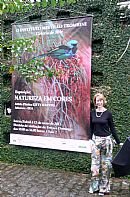 Signature membership in Artists for Conservation is limited to 500 members and is by invitation only. It is a jury process that considers one’s artistic ability and also one’s participation in conservation efforts. Our membership spans 27 countries and I am the only member painting proudly under the Brazilian flag (I have dual residency in the states and Brazil). I was honored with the award of Conservation Artist of the Month in April of this year.
Signature membership in Artists for Conservation is limited to 500 members and is by invitation only. It is a jury process that considers one’s artistic ability and also one’s participation in conservation efforts. Our membership spans 27 countries and I am the only member painting proudly under the Brazilian flag (I have dual residency in the states and Brazil). I was honored with the award of Conservation Artist of the Month in April of this year.
As a Conservation Artist, I feel it relates to all areas of my life – being mindful of every choice we make and how it affects our planet and those we share it with. For example, I’m committed to eating organic and locally grown food whenever possible, to using skin and hair products that are eco-friendly and most importantly, not tested on animals, everything from toothpaste (flouride-free) to hair color that is cruelty-free and safer for both the environment and my scalp!
Have you always been interested in combining your art with helping animals and in particular endangered animals; what was your “light bulb” moment?
Until my first few trips to Brazil, I was the president of a small design firm in Little Rock, AR. I illustrated children’s picture books, magazine articles, and gift items…painted portraits and still-life paintings. Always at the ready to donate to the local humane society or various other charitable organizations, but not primarily wildlife, no.
In 2004, I lost my mother to Alzheimer’s. She was an artist, a watercolorist, we began our art careers at the same time – when I left for college, she went back to college to study art, she was 46 at the time. I was 46 when she died and thought that perhaps I should start a new career, just as she had at that age. I began making more trips to Brazil but to photograph the wild nature, not to paint…in fact, I didn’t paint for 2 years after her death. But, what was happening to me, I see now in retrospect that being in Nature was healing me from the grief of her loss – I’m an only child and she was my best friend.
In 2006, I had the urge to make a pastel painting from a Giant River Otter photo I had taken – and there it was – my new passion: my hand literally flew around the paper, I was in love with making art again, but with new energy and a new purpose. I knew then I wanted to share the amazing creatures I had been photographing through my interpretation of them in watercolor, pastel, oil, etc.
What led you to do the Vida Livre project, and what is its goal?
If you work to raise awareness and save a species, you will, in turn save an ecosystem as well.
I had the opportunity to visit Ilha Pinheiro where the Red-tailed parrots have a large dormitory and every morning and every evening there is a spectacular show as the birds fly out to the mainland to feed during the day, and return to sleep on the island at night. This was in December of 2007.
It wasn’t until December of 2008 that we were invited to accompany the biologist Elenise Sipinski of SPVS (Sociedade de Pesquisa em Vida Selvagem e Educação Ambiental) on her trip to Ilha Rasa (another island in the Guaraqueçaba Bay area) where there is a project running of artificial nests. So, there I went with my camera, photographing every step of that adventure – and at the end of the few days, I turned to my husband and said – this is a book. He encouraged me to make a few sketches and we would present the idea to SPVS. They liked the idea, but…we needed an author. It was several months before we found author Adélia Woellner, a well-known children’s author here in Curitiba.
It is unusual for a book to start with the illustrations and not the other way around. But, I provided her with thumbnail sketches of what I envisioned for the story of the project and she did a wonderful job of combining a fantasy story of the birds which we were able to weave together with her words and my pictures.
Next we submitted it through “Lei Rouanet”, a process for projects to be approved by the Brazilian Ministry of Culture…and waited several months for the approval. Once approved, it was time to find a sponsor – a project that is approved by Lei Rouanet allows the company that chooses to sponsor it, a tax deduction, which is not allowed on other donations in Brazil. So, more waiting…meanwhile I began the illustration process, so that by the time we had our sponsor, the illustrations were complete and ready to go to the text designer and then printer.
All in all, it was a long process – what began as a trip with Tise (Elenise) in December 2008 ended with the official launch of the book in June 2012.
The reason and goal for all this effort is education. Of the 3,000 books printed, 1,500 have been distributed free of charge to schools, libraries, and children all along the coast of Brazil where this parrot lives. If you work to raise awareness and save a species, you will, in turn save an ecosystem as well.
Please give a brief overview of the plot of the story (as the actual book is in Portuguese):
Note: “Vida Livre” means “Live Free” in Portuguese.
The story begins with a fantasy view of the bird as Dona Caroxa (Dona is the Portuguese term for the lady of the house, and Caroxa comes from the name of the parrot in Portuguese – Papagaio-de-cara-roxa – or literally the purple-faced parrot). She shows how the parrots gather in the morning to fly out for food, the types of food they eat, their predators, etc.
When she and Seu Caroxa (her hubby) decide to start a family, she flies out to find a suitable nest, but all the trees that these parrots prefer have been cut down and she is very sad. She finds a strange substitute – an artificial nest created by the team at SPVS and decides to give it a try – actually it seems to offer more protection from predators that might steal and eat the eggs she lays.
Her chicks hatch and she and Seu Caroxa fly out to find food for them, but she worries because there are so many dangers in the world for parrots. She warns her babies about people that steal parrots and take them far away to live in cages, often dying along the way.
Finally she calls a meeting at Avô Caroxão’s tree home (the big grandfather parrot) to warn all the “teenagers” and their parents. This ends the fantasy section which is illustrated in cut-paper collage.
In the next scene – Dona Caroxa continues as a narrator (in cut-paper) but the illustrations change to a more realistic watercolor style as she explains that there are good people that are helping the parrots. The story then continues with the team bringing the babies down from the nest to be measured and weighed and their beaks measured, checking for larva in their eyes, taking a feather from the back of the neck for genetic testing in São Paulo, etc…until the babies are returned to their nests.
The book then reverts back to the cut-paper style as she explains that the numbers of the parrots are increasing, then shows a father and son planting a tree while a mother and daughter gaze into the forest and the phrase – the place of the parrot is in the forest – culminating with – THE PLACE OF THE PARROT IS IN THE FOREST! Following is an informational double-page spread complete with relevant websites.
This video follows the dream of the team that made the story of the Papagaio-de-cara-roxa a reality in the book “VIDA LIVRE”:
I love the paper cut illustrations you did for the book (in addition to the paintings). What made you decide to create a paper cut or a painted illustration (it appears that the paintings represent the conservationists??)?
The children’s books I’ve illustrated in the past in cut-paper have been quite successful, so I wanted to use this style in the book. I also have been doing portraits for years, so I wanted to include portraits of the real people of the project. I’m really pleased that I was able to merge these two very different styles and have, what I consider an innovative and successful outcome. We have inquiries to use this same format for books about other endangered species.
How long did it take you to create the illustrations/paintings? Was there any special process involved?
This project was a labor of love – I have no idea how many hours I spent, probably all together from initial layouts to the last brushstroke or glued paper piece, about 6 months. Unlike American children’s books which are 32 pages, this book is 48 pages.
The cut paper is an involved process. I use a special hand-made Japanese paper, then paint large areas with acrylic paint using colors that I will need for a specific page. Next, I make pattern pieces from every shape from my drawing. I lay these pattern pieces over the painted acrylic paper to see which areas will work best for that specific shape, then I use an x-acto knife to cut the shapes.
After all the shapes are cut, I do a watercolor underpainting on 300 lb. Arches cold press paper. I make a copy of my original drawing in marker (the original pencil will smear) and tape it to my watercolor paper. Then, I glue and slide the pieces into position on the watercolor paper. I especially like the dimensional effect achieved with this process. Note – some of the pieces are reeeeeaaally small – every beak, eye, etc…
For more photos of the making of Vida Livre, please see Kitty’s album here.
How long did you spend with the SPVS conservationists? What is one memory you have of your time there?
We have been involved with SPVS since moving to Curitiba in 2006. My husband was friends with the President Clovis Borges. He (my husband, Christoph Hrdina) has been working in nature for more than 30 years here. Originally from Frankfurt, Germany and an international banker for 10 years before choosing to move to Brazil at age 30.
In 1986 he co-founded Funatura in central Brazil, that’s saved hundreds of thousands of acres and turned them into a national park – his is a fascinating story! The actual excursion we took was only 2-3 days but enough inspiration and material to carry me through the book.
SPVS also supplied additional reference photos for me as far as the foods the birds eat, predators, views of the bay area, etc.
What is the work that SPVS is doing for the birds? How did you become involved with them?
SPVS monitors the numbers of birds using yearly censos counts. They have about 60 artificial nests on Ilha Rasa and the birds seem to like and even prefer them. They monitor and check the nests regularly by having their team visit and by hiring the local people (some of whom actually participated in the illegal parrot trade in the past, but have been educated about the parrots and are now their defenders).
You have participated in a number of census counts for the parrot. Have you noticed a decline yourself in the parrot population since beginning the counts?
We just participated in a census count a few weeks ago, the numbers have been slowly increasing and this year saw quite an increase, with over 5,000 (the 2nd highest count ever).
Do many people in Brazil still catch the birds and keep them as pets (or export them), or are people coming to realize how special they are and should stay in the wild (especially as they live in such a small part of Brazil)?

Campaigners in Brazil believe the illegal wildlife trade is so extensive that some species may be driven close to extinction.
They say poachers are taking an estimated 38 million birds, animals and reptiles from the wild each year.
Illegal trafficking of this particular parrot still exists, but is very limited, we think largely due to the awareness of the population in the area where he lives.
Illegal trafficking of other parrots is still quite a big problem. (Note: see more about trafficking in Brazil here and here.)
Have you ever lived with a parrot, or had a relationship with a wild parrot? Why do you feel these animals should be saved?
I have had a relationship with a parakeet, so, I know how intelligent and emotional these animals are. They are beautiful creatures, a vital part of the web of life, and in my opinion, every creature has its reason and its right to be.
I feel humans have a stewardship to protect this beautiful planet that gives us so very much – physically, emotionally and spiritually. Remember, after my mother’s death – it seemed Nature felt I should be saved !
I think providing the birds with alternatives for nesting, educating the populations in the areas where the parrot lives and flies to find food are two of the most important actions to bring them out of their endangered status.
What more needs to be done and how can people help?
Supporting organizations who work scientifically to help these species and continued education of the population and creative ways to raise awareness. We have it all in our hands to make changes, but the biggest changes seem to be in the minds and hearts of our fellow human beings.
Do you see a direct tie with those in North America (and other continents without indigenous parrots) wanting to keep birds as pets and the poaching and export of parrots from countries that do have them (even though there are strict laws preventing wild caught birds from entering North America)?
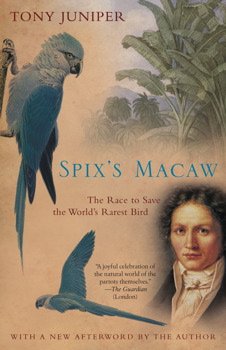 As long as there is a market, illegal trafficking will exist. I’m more familiar with this problem through my connection with the Spix’s Macaw. I was commissioned to paint this species for ICMBio’s International Action Plan this past February. I became so interested in this macaw that I ordered “Spix’s Macaw: The Race to Save the World’s Rarest Bird” by Tony Juniper [note from Cheryl: I’ve read it, and it’s well-worth hunting down], and I’ve offered the image to Bird Life International/SAVE Brasil to use in their program to educate the population in the area where they hope to reintroduce the Spix’s Macaw in a few years.
As long as there is a market, illegal trafficking will exist. I’m more familiar with this problem through my connection with the Spix’s Macaw. I was commissioned to paint this species for ICMBio’s International Action Plan this past February. I became so interested in this macaw that I ordered “Spix’s Macaw: The Race to Save the World’s Rarest Bird” by Tony Juniper [note from Cheryl: I’ve read it, and it’s well-worth hunting down], and I’ve offered the image to Bird Life International/SAVE Brasil to use in their program to educate the population in the area where they hope to reintroduce the Spix’s Macaw in a few years.
There are about 85 birds in captivity worldwide (they are considered Extinct-in-the-Wild). It seems that humans just want to have whatever happens to be considered rare (and beautiful) and will pay very high amounts (estimates are around $60,000 for the Spix’s Macaw).
If we solve the problem of human greed, and instill respect for all living creatures, we will solve the problem of illegal trafficking – and so, we’re back to education and raising awareness and consciousness.
We have it all in our hands to make changes, but the biggest changes seem to be in the minds and hearts of our fellow human beings.
- Kitty Harvill’s website
- More about Kitty on “Nature Artists”
- Kitty Harvill on Facebook
- Images from Vida Livre
- Purchase Kitty’s art
- Artists For Conservation award
- SPVS website
- SPVS Red-tailed Amazon conservation project
- SPVS on facebook
- About the Red-tailed Amazon (Wikipedia and Birdlife)
- Photos of the Red-tailed Amazon


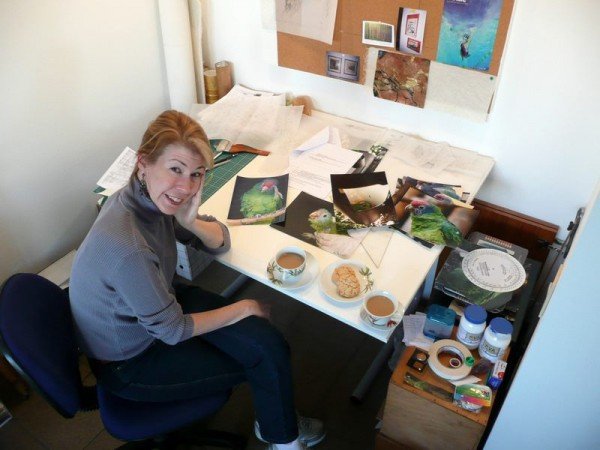



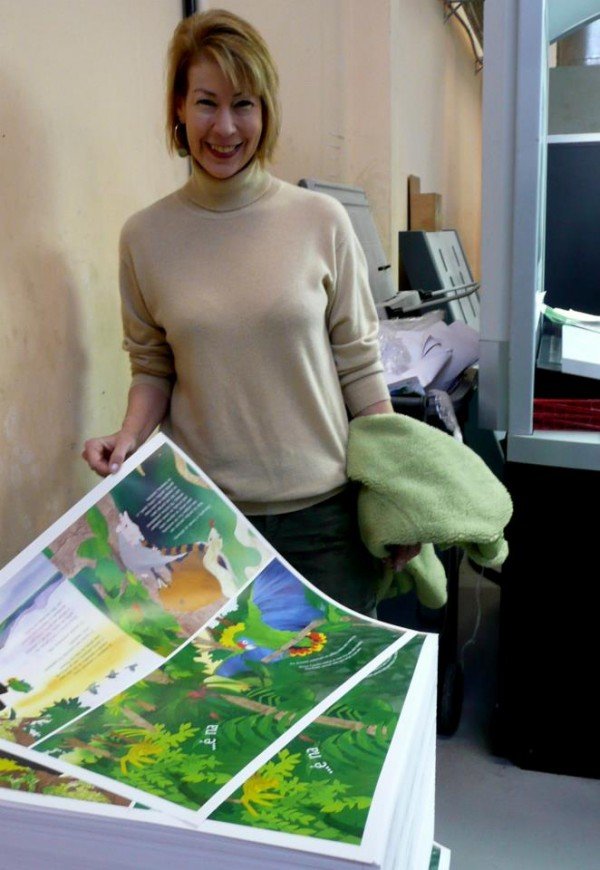
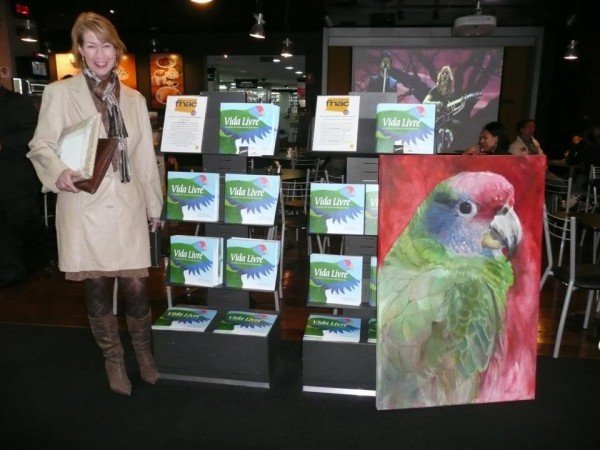

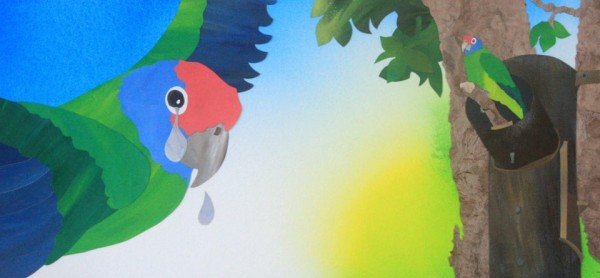

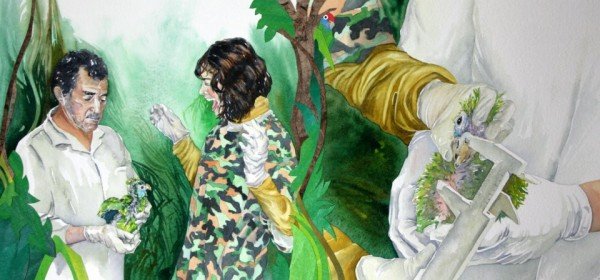

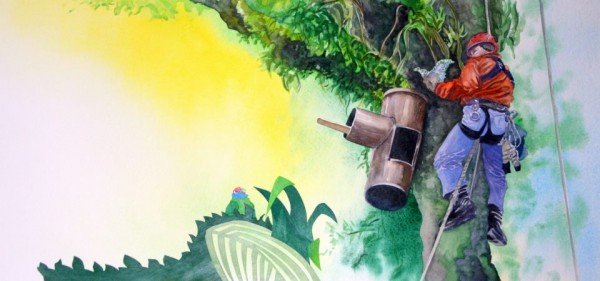
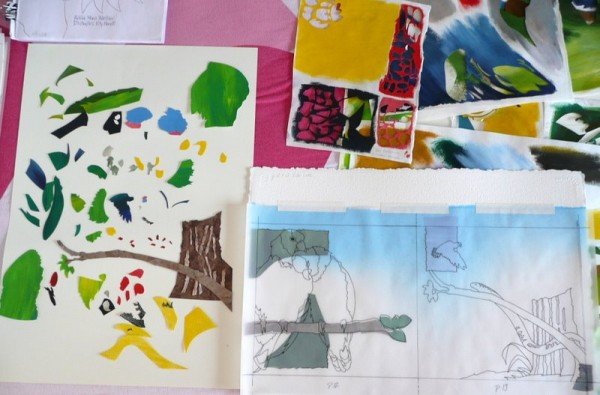
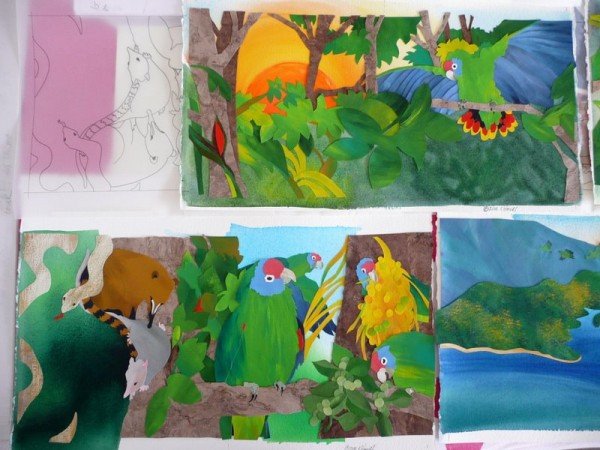
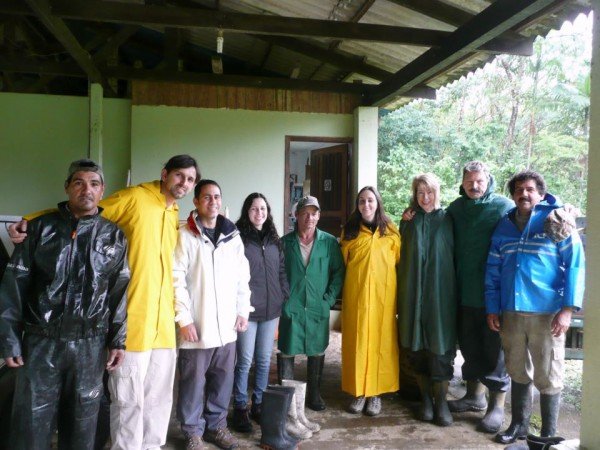
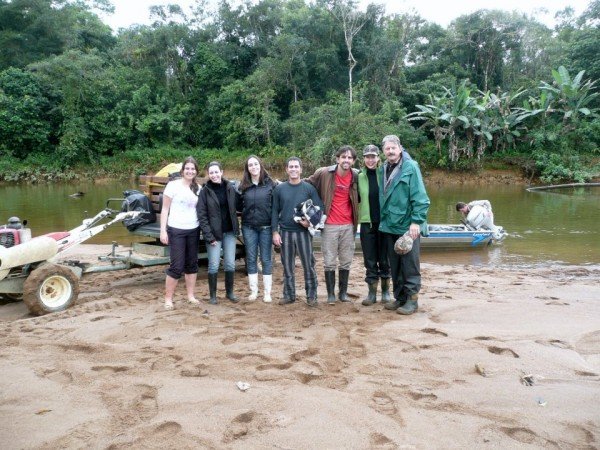
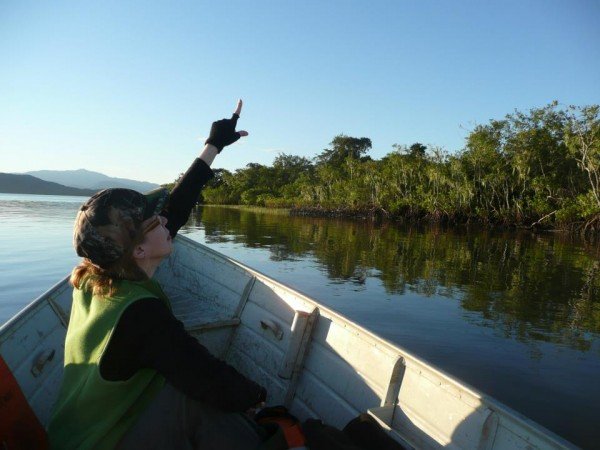

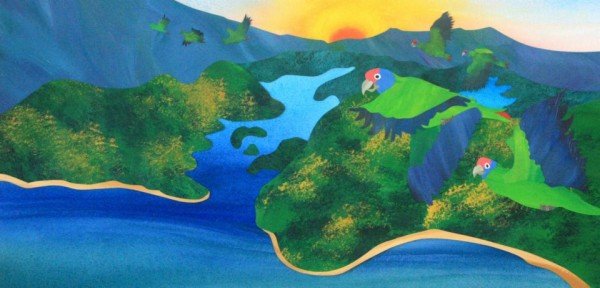





[…] https://forparrots.com/2013/07/07/vida-livre-live-free/ […]